【語源学】インド生まれイギリス経由の日本カレー
カレーライスといえば日本人の大好物トップ3の常連です。カレーと聞いて多くの人はインドを連想しますが、カレーライスの起源はイギリスの軍隊にあった、というのが今日のお題です。
ヨーロッパ人のカレーとの遭遇
カレーライスは和製英語です。英語では本来 curry with rice といいます(日本文化がグローバル化している現在では、Japanese curry rice で通じますが・・・)。ご飯に何らかのソースや炒め物をかけた料理は X with rice という言い方をします。主食(staple food)という観念の薄い欧米の料理体系においては、白米が主人公ではなく、ソースや炒め物が主人公なわけです。
このカレーライス、日本にはインドからではなくイギリスからやってきました。兵隊さんの病気対策だったんです。本題に入る前に、ちょっとカレー(curry)をめぐる語源学の旅をしてみましょう。
カレーの語源:タミル語→ポルトガル語→英語→日本語
Curry was adopted and anglicized from the Tamil word kaṟi meaning ‘sauce’ or ‘relish for rice’. It is usually understood to mean vegetables or meat cooked with spices with or without a gravy, used first in English in 1747 when a curry recipe was published by Hannah Glasse.
ここにあるようにタミル語の kari が語源という説が有力です。でもタミル語→英語という直接経路ではなく、ポルトガル語経由のようです。ポルトガルの方が先にインドに進出していたので頷ける話でしょう。ここには、kariの意味が「ソース」もしくは「米に使う香辛料」と書いてありますが、正確には違います。タミル語の kari は「ソース」や「香辛料」ではなく「噛む(噛んで食べる」「野菜」「肉」などを意味するからです。それがどうしてカレーの意味になったのか?ちょっと推測してみましょう。
ポルトガル人による大雑把な命名
初めてインドに進出したヨーロッパ人はポルトガル人でした。当然、カレーと最初に遭遇したのも彼らです。
The Portuguese first came to India’s palm-toothed southern shores in 1498, in search of cardamom, cloves, and black pepper, each among the world’s most valuable commodities. Lacking a word to describe the spicy, coconut-thickened stews they found there, they went ahead and made one up: caril, taken from the Tamil word kari.
この記事の説明によれば、ポルトガルが日の出の勢いを誇っていた1498年、当時アラビア商人が独占していた貴重(従って高額)な香辛料を求めて航海していた探検家ヴァスコ・ダ・ガマが、南西インド(インド西岸)のカリカット(現コーリコード)という港湾都市に到達しました。いわゆる東インド航路の発見です。
カレーは南インド一帯のスパイス入り煮込み料理の総称?
ガマ自身か仲間かはわかりませんが、ポルトガル人はココナツミルクをスパイスで味付けした奇妙な「シチュー」料理に出会ったのです。これがカレー料理の一種だったわけですが、交易商人は交易商品以外にはざっくばらんな人たちです。
現地の人が「野菜」料理とか「肉」料理とか広い意味で kari と言っているのを聞いて、南インド地方のバリエーションに富むスパイシーな煮込み料理を十把一絡げに caril と呼びならわしたのではないでしょうか?現地の人が使う kari の概念は、日本人がラーメン、そば、うどん、スパゲティを漠然と「麺」と呼ぶようなものではなかったかと思います(南インドの煮込み料理の豊富なバリエーションについては以下のサイトをご覧ください)。
こうして caril はヨーロッパ人の間でインドの煮込み料理全般を指すカテゴリーになっていったと思われます(※なお、引用元の英文はWeb上で carel となっていますが、これは caril の間違いです)。これが、最初に言いました「curry ということばがポルトガル語の caril から訛って英語に入った」背景です。
 ところで、ポルトガル人が上陸したカリカットはタミル地方に隣接するケーララ地方の街です。現地の人はマラヤーラム語(Malayalam)というタミル語に非常によく似たことばを話すそうですが、タミル語の kari はマラヤーラム語でも kari のようなので、余計ポルトガル人には便利な呼称だったのかもしれません。
ところで、ポルトガル人が上陸したカリカットはタミル地方に隣接するケーララ地方の街です。現地の人はマラヤーラム語(Malayalam)というタミル語に非常によく似たことばを話すそうですが、タミル語の kari はマラヤーラム語でも kari のようなので、余計ポルトガル人には便利な呼称だったのかもしれません。
なお、英語文献における curry という単語の初出は1747年(イギリスの有名な料理本)だといいますから、イギリスが大英帝国の地歩を固める時代、つまり虎視眈々とインドの植民地化を画策していた時代ということになります(イギリスがフランスと競うようにインド大陸に進出したのが17世紀終わり、インド帝国として完全植民地化するのが19世紀中盤です)。
インドの多民族性と言語環境
インドの多民族性と言語の混在状況について興味のある方は、以下の記事が参考になります。
カレーライスの由来
それでは本題の日本のカレーライスの由来に関する英文記事を、対訳とともに紹介します。
The story begins thirty years after the rapid and almost entirely peaceful Meiji Restoration which saw Japan undergo sudden and rapid modernisation, having up until that point, been a relatively isolated land ruled by a Shogan and local samurai on behalf of the Emperor. In a very short passage of time Japan managed to transition into what was for the most part, a recognisably modern, westernised state. Japan had been so successful, in fact, that in 1902 Japan and the United Kingdom of Great Britain and Ireland signed the Anglo-Japanese alliance. The alliance was renewed several times lasting until 1921. During that time the UK worked closely with Japan, in particular there was considerable cooperation between the two countries’ respective navies.
日本式カレーの起源は日本が開国して30年後に遡る。幕府と諸藩の武士が天皇の代わりに治める比較的孤立した国だった日本は、あれよという間に、ほぼ無血の明治維新を実現し、猛烈な勢いで近代化に乗り出した。数十年という短期間に、国の大部分が目に見えるかたちで西洋化され、ひとかどの近代国家に生まれ変わった。この近代化の大成功により、1902年にはイギリスとアイルランドとの間に日英同盟を締結するに至り、同盟関係は1921年に解消されるまで数回更新されたのである。同盟時代、日英は密接に連携したが、とりわけ両海軍の関係は親密だった。
脚気という難題
A major part of Japan’s modernisation effort was to build up its military forces, primarily to prevent colonisation by the world’s major colonial powers, including Britain, France, America and particularly Russia, against whom Japan fought a decisive war prior to its alliance with Britain. In building up these forces Japan needed to recruit lots of young men. One major problem the Japanese military experienced though, was with recruits suffering from the disease Beriberi, which causes a variety of debilitating neurological disorders.
日本の近代化の主眼は軍備の増強にあり、英仏米などの列強勢力に対する防衛を、とりわけ日英同盟を組む前に戦火を交えたロシアの植民地侵略を阻むことにあった。軍備増強のため国は多くの若者を招集したが、脚気にかかって様々な衰弱性神経障害に苦しむ招集兵が少なくないのが悩みの種だった。
脚気を引き起こすビタミンB1の欠乏には、江戸時代の食生活の変化が大きく影響したようです。富裕層が精米した白米のおいしさを “発見” して常食するようになり、それまでの玄米食や麦飯中心の食生活が崩れ始めていたからです(ビタミンB1は玄米や麦に多く含まれています)。明治時代に入っても貧しい農村では旧来の食生活をしていたので、軍は軍隊の食事を特権的に白米主体とし、農村から兵隊を集める恰好の “エサ” としたわけです。
A British trained Japanese naval doctor called Takaki Kanehiro was able to determine that the cause was a deficiency of vitamin B1 due to a diet of almost nothing but highly polished white rice the recruits tended to eat. The government needed to ensure recruits were receiving adequate vitamin B1 and the cheapest, most easily available source was wheat grain. However Japanese sailors from poor rural areas didn’t want to eat bread which they regarded as snack food or have cereals added to rice which was too reminiscent of food regarded to be the staple diet of rural peasant farmers they were familiar with back home. What the authorities needed was a way to disguise the presence of wheat in the rice.
当時、海軍にはイギリスで医学教育を受けた高木兼寛(たかきかねひろ、東京慈恵医大創設者)なる軍医がいた。高木は、精白米を主食とする食生活がビタミンB1を欠乏させ、脚気を引き起こすと判断した。政府が十分なビタミンB1を補給できる食材を探したところ、最も安価で入手が容易なのは小麦粉以外考えられなかった。ところが、貧しい農村の出身者が多かった日本の海兵には、小麦のパンはお菓子の一種に過ぎず、白米に穀類を混ぜると麦飯や玄米食といった故郷の貧しい食事を思い出すと言って評判が悪かった。困った当局は小麦の存在を感じさせない米食の開発を急務とした。
イギリス海軍の軍食メニュー
At around the same time, Japanese naval officers were enjoying numerous liaison dinners with their British counterparts as the two navies improved relations and exchanged tactics and technological knowhow to strengthen their new alliance. One of the foods served aboard ship was a type of curry, a curry that the British had long ago adopted from India, which for more than a century had been a major British colony, and while most cultural flow resulted from the forced implementation of British education and administration systems, the British had conversely been the recipients of a number of Indian customs including elements of Indian cuisine, prime among which, was a taste for curry.
同じ時期、日英海軍は旧来の敵対関係を改め、新たな同盟を強化すべく戦術や技術ノウハウを交換し合い、海軍士官たちは親睦ディナーを楽しむ間柄になっていた。この船上ディナーのメニューのひとつとして提供されていたのが、イギリス風にアレンジされたインド発祥のカレー料理だったのである。1世紀以上前からイギリスの主要植民地だったインドでは、イギリス式の教育と行政システムが強制的に施行され、多くの文化が流入していたが、それとは逆に、イギリスには料理をはじめ多くのインドの風俗が持ち込まれた。中でもイギリス人が愛好したのがカレーだった。
It wasn’t long before Japanese officers realised curry could be the answer they had been looking for and a variation on the British recipe was mixed with wheat and ultimately served with rice to the men. The men soon developed a taste for Curry Rice and when they eventually returned home they retained their affection for the dish which eventually spread throughout Japan leading to its popularity today.
カレーこそ軍が探し求めていた答えだと、将校たちが気づくのに時間はかからなかった。海軍は小麦粉を使うイギリス風のカレーを白米にかけ、士官たちに提供した。このカレーライスなる食べ物はすぐみなの気に入るところとなり、軍人たちは帰還後もカレーを愛好し続けた。こうしてカレーライスは海軍から日本中に普及していき、今日の定番人気料理の地位を築いたのである。
イギリスの激辛嗜好
Meanwhile in the UK, curry remains popular, but British taste has over the years changed to demand hotter and hotter dishes. So much so that most curry served in the UK is now far hotter than curries which are traditional to India and indeed several extremely hot dishes which developed in the UK like Vindaloo curry have even now been exported back to India.
一方の英国ではどうかと言えば、カレー人気は衰えないが、年々客の激辛嗜好が昂じ、イギリスの店が出すカレーの大半はインドの伝統的なカレーよりはるかに辛くなった。激辛化したイギリス風のヴィンダルー・カレーがインド本国に逆輸出される事態に至っているのである。
If you are interested in comparing British curry, as it would have been served in the early 20th century and the modern Japanese curry you can experience when visiting Japan, you can find a recipe for old style British curry in the incredibly famous (and still in print) 1861 British cookbook: Mrs Beeton’s Book of Household Management. The recipe for curry powder is at section 449 and makes a note that the recipe is based on one by Dr. Kitchener. William Kitchiner having been the author of The Cook’s Oracle which was published even earlier, in 1822.
 20世紀初頭に食されていただろうイギリス式カレーと、現代の日本式カレーの違いを知りたい人は、イギリスでは超有名な(いまだに版を重ねている)1861年発行の『Mrs Beeton’s Book of Household Management』(ビートン夫人の家政読本)を読まれるといい。カレー粉の作り方はセクション449に載っている(この作り方はキッチナー博士のレシピを参考にしたものだという)。ウィリアム・キッチナーは1822年初版の『The Cook’s Oracle』を書いた人だ。
20世紀初頭に食されていただろうイギリス式カレーと、現代の日本式カレーの違いを知りたい人は、イギリスでは超有名な(いまだに版を重ねている)1861年発行の『Mrs Beeton’s Book of Household Management』(ビートン夫人の家政読本)を読まれるといい。カレー粉の作り方はセクション449に載っている(この作り方はキッチナー博士のレシピを参考にしたものだという)。ウィリアム・キッチナーは1822年初版の『The Cook’s Oracle』を書いた人だ。
Today it is easy to find hotter curries in many Indian and Thai restaurants Japan offers as well as in many other types of bar and restaurants, many of which serve an eclectic selection of dishes from around the world, but for now, Japanese Curry Rice is still firmly the nation’s favourite and looks highly likely to remain so for many decades to come.
現代日本でも激辛カレーは珍しくない。インド料理店やタイ料理店でも、世界各国の折衷料理(多国籍料理)を出すバーやレストランでも簡単に味わえる。しかし今のところ、日本式カレーライスの人気は不動だ。おそらく数十年経っても、その地位は揺るがないだろう。
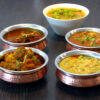


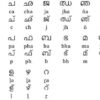


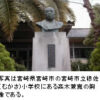



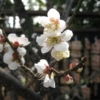
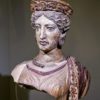
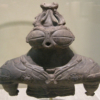

ディスカッション
コメント一覧
まだ、コメントがありません